
How To Grow Purple Weed
If you've ever spent any time scanning websites devoted to cannabis, you'll undoubtedly have seen ridiculous-looking purple strains. You probably wondered, "Why have I never seen these in real life?", and, "Are they even real?". The good news is that, yes, they are real, and you can grow purple weed too!
We’ve all heard of Purple Haze. Fewer of us have been lucky enough to smoke some. However, purple cannabis isn’t as rare as you may think. In fact, with a little bit of knowledge, growing this legendary stuff can be as easy as growing any other strain.
So have a read below, and then set out to impress your mates with your colourful, beautiful purple buds.
What Is Purple Cannabis?
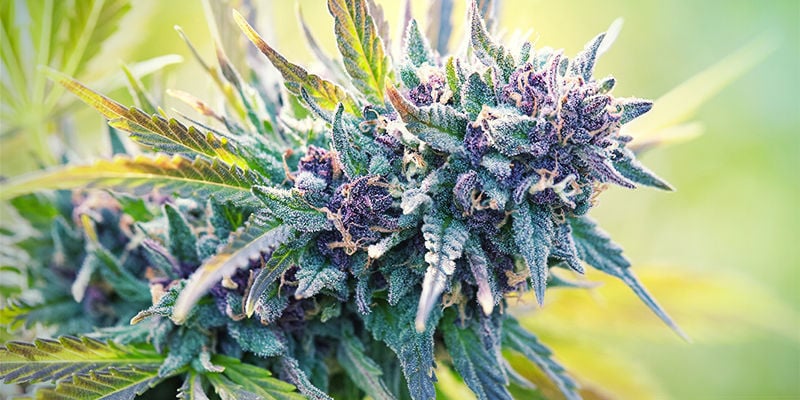
Purple cannabis is cannabis with purple leaves, purple buds, or both. It looks amazing, and it’s hard to believe that it doesn’t have almost mystical effects, given iFts magical appearance. Though certain environmental conditions can trigger the expression of purple in cannabis, the most important factor when it comes to colouration is genetics. Some strains will go purple, others just won’t.
What Causes Purple Cannabis?
The phenomenon of purple weed is thanks to anthocyanins—a group of around 400 water-soluble pigments that can appear red, blue, or purple depending on the pH. If the pH is near neutral, as it should be, then any cannabis strain with an abundance of this pigment will likely end up with purple bud!
Anthocyanins aren’t actually produced by cannabis until the last few weeks of its life, where they can show up thanks to reduced amounts of chlorophyll, which would otherwise block them from view. A reduction in light exposure, which triggers photoperiod cannabis to bloom, results in less chlorophyll being produced. This can even be seen in cannabis plants that don’t produce an abundance of anthocyanins—with gold and orange hues often appearing within a plant’s last weeks before harvest.
What Parts of Cannabis Can Change Colour?
All parts of the cannabis plant can change colour throughout its life cycle. Sometimes these are genetically predisposed changes, other times they are responses to the environment, and sometimes they are the symptoms of disease and pestilence.
Buds
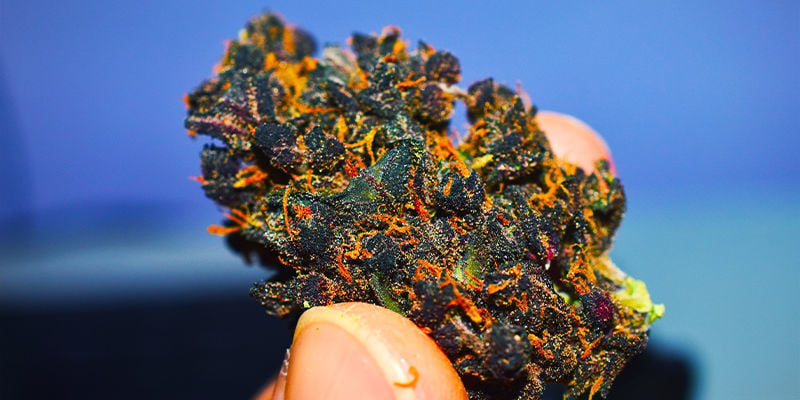
Cannabis buds are the part of the plant with the greatest capability of donning a range of colours. When you consider that they are the plant’s flowers, then suddenly the display of colourful opulence seems less surprising.
In most cases, buds will be predominantly green. However, they can also take on hues of red, pink or purple. When you get a flower that isn’t green, it can be a very exciting moment.
However, it’s important to understand that certain colours appearing on buds can also indicate problems, such as bud rot. In these instances, they are likely to go brown and will begin to smell. Unless you’ve never seen weed before, it’s unlikely you’ll mistake this for an interesting, healthy colouration. Nevertheless, it's still worth bearing in mind.
Leaves

You may think that leaves are destined to be green. They are, after all, full of chlorophyll—the dominant pigment in cannabis—and chlorophyll is green. Well, in a way, you’re right. Except leaves start changing colour as autumn draws near. The temperature begins to drop, and plants inhibit chlorophyll production. Sound familiar? At the same time, anthocyanins will increase in quantity, thus causing cannabis leaves to change colour.
Anthocyanins can range from blue to purple, but there are other compounds that can cause different colourations too:
| Lycopene | Red |
| Carotenoids | Yellow |
| Chlorophyll | Green |
| Anthoxanthin | White |
Much like the flowers, healthy processes aren’t the only ones that can cause leaves to change colour. The two things to look out for most are overwatering and overfeeding. Both of these cause symptoms such as yellowing, followed by wilting. Yellowing leaves can be a healthy, natural process toward the end of a plant's life cycle, or a sign that something is wrong.
Trichomes
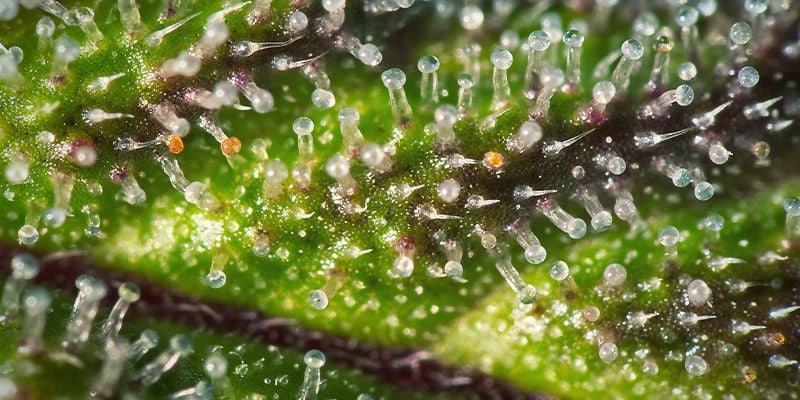
For most of their lives, trichomes are clear. These are the glands that grow on cannabis flowers and produce all of your favourite cannabinoids, such as THC and CBD, as well as terpenes, flavonoids, and other phytochemicals.
For cannabis growers, the trichome colour change is one of the most important parts of the entire process; it means harvest time is approaching! Once the trichomes begin to change from clear to milky, with some even turning amber, it’s time to snip off those buds and begin the post-harvest process.
The different colours of trichomes indicate the cannabinoid content and ratio within. A clear trichome is still developing and has not reached full potency.
A cloudy or milky trichome contains its peak amount of THCA (which converts to THC via the process of decarboxylation).
In an amber trichome, THCA has degraded into CBNA. CBNA decarboxylates into CBN, which creates a more couch-locked, less-psychotropic high.
Pistils
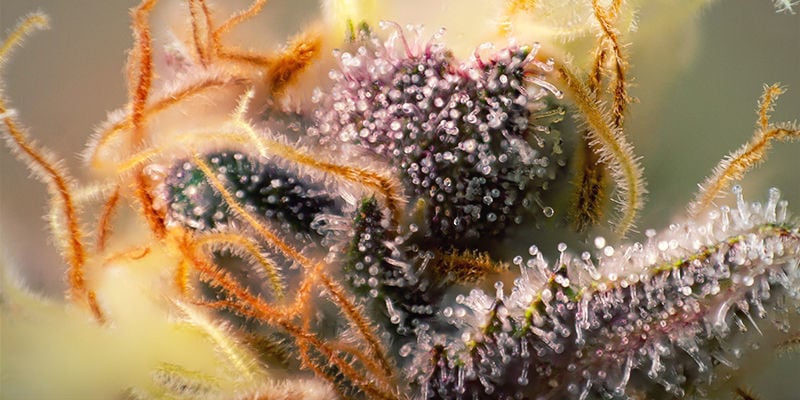
Those little red-orange hairs all over your cannabis buds are called pistils. They are, in fact, the female sex organ of the plant. On most flowers, they are called stigmata. Their purpose is to catch pollen from males as it drifts by on the breeze.
They begin life white, and darken as the plant matures. On some strains, the overall amount of dark pistils can indicate the maturity of the whole plant; on others, they will continually replenish.
There are two reasons pistils turn dark. One is that they are old; another is that the plant is pollinated. In either situation, they turn dark when they are no longer needed. If you’re after a good crop of bud, you best hope they’ve turned dark because they’re getting old!
Is Purple Weed More Potent Than Green Weed?
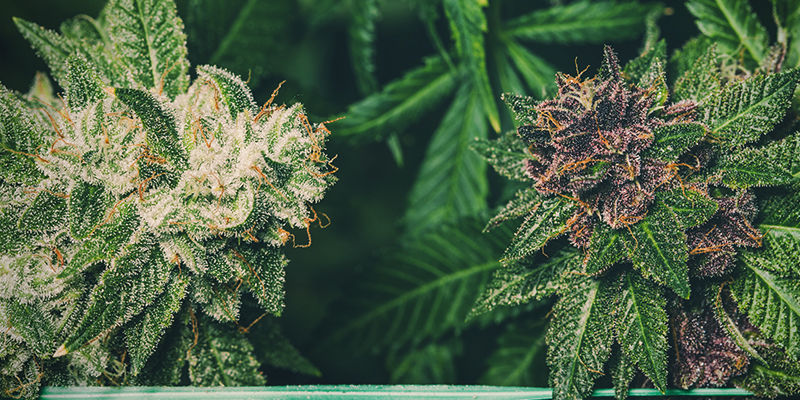
Unfortunately, despite its potent appearance, purple weed does not necessarily contain more THC compared to non-purple weed. Nevertheless, that doesn’t mean it doesn’t contain other beneficial substances.
Anthocyanin has been studied (Khoo et al., 2017) for its analgesic, anti-inflammatory, and neuroprotective potential. Although, what impact this has when smoked (if any) is unknown. It could well be that heating destroys it. We simply don’t know. Still, it looks cool!
The other main benefit of purple weed is to boost your ego as a cultivator. Even with strains that have a tendency to turn purple, it can still be difficult to coax this out if you don’t know what you’re doing. So for those who are able to rear a purple crop, hats off to you! It’s no mean feat, and your weed-growing skills are top notch.
How To Grow Purple Cannabis
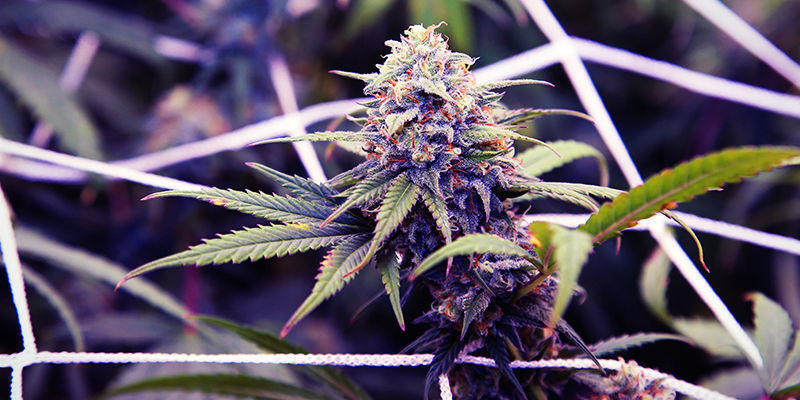
So, fancy yourself as a master cultivator? Well, here’s all you need to know to try and get all those anthocyanins in your weed to reveal themselves!
Adjust Temperatures
For some purple strains, fluctuations in day–night temperatures can help to bring out those cool violet colours. Whether this is because cooler nights mimic autumn more is unclear, but this could well be the case.
A stable temperature of around 25°C during the day, contrasted with a cooler 20°C at night, will help those buds turn purple if they’re proving a little hesitant. Using cooler temperatures to bring out these colours is best practiced nearer to the end of the growing cycle. What impact it has earlier on is less clear, and it may just negatively impact your yield.
Focused Lighting
It appears that purple strains really like the sun. So strong, focused, and direct light will tease out those anthocyanin molecules where they’re present. Again, the mechanisms behind this are not entirely known. However, for the average grower, it’s enough to know that it works.
pH May Play a Part
In other species of anthocyanin-containing plants, pH impacts which pigments come to dominate. Acidic conditions (<7) are thought to bring out red colourations; neutral (7), purple ones; and alkaline (>7), green-yellow ones.
Now, anyone who has grown cannabis before will know that it cannot be this simple. Cannabis loves acidic soil, and yet rarely does it turn out red. And when people grow purple weed, it is often not in neutral soil. However, being aware of these characteristics is important, and further study can be built off of them.
Pick the Right Genetics
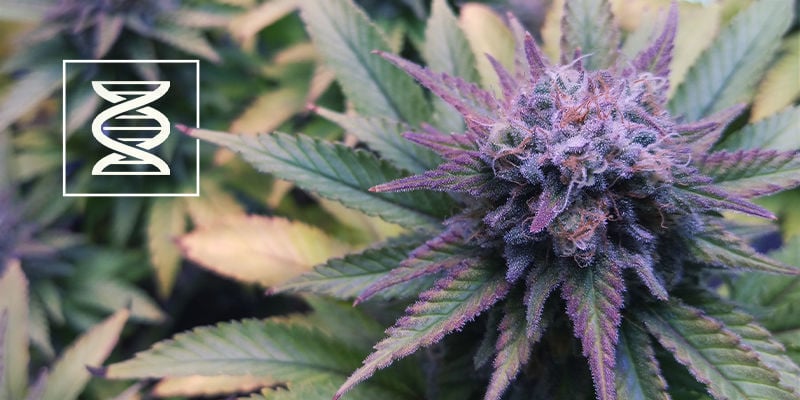
All of the above is useless if your plant is not genetically predisposed to turn purple. Whatever people may say, there are many strains out there that simply cannot exhibit a purple colouration. And likewise, there are some strains that you’ll have a hard time stopping from turning purple!
So, good strain choice is the most important factor when it comes to achieving purple weed.
Below are our top choices for a quality harvest of purple buds.
Purple Lemonade Auto (FastBuds)
Purple Lemonade Auto displays a vibrant pink-purple colouration and is sure to impress with looks alone. Thankfully, the quality follows through to the flavours and effects too. With 70% indica genetics, it's a highly relaxing strain and this makes it a great evening smoke. Containing 22% THC, expect a prolonged and heavy body-high and a deep, deep stone.
With a total lifecycle of 8–9 weeks, Purple Lemonade Auto won't take long at all. And with yields of 450–500g/m², you're sure to be satisfied by this pink lady.
Kalini Asia (Zamnesia Seeds)
This “flower from the Hindu Kush” comes packed with some pretty rare Asian genetics. Developing unbelievably beautiful purple colas, this is one of the most stunning cannabis strains available. And it’s very potent. With 22% THC, it’ll knock your socks off. Despite its Kush origins, the high has a euphoric, cerebral side to it too, which gives it an exciting buzz that many smokers crave.
Growing low and bushy, it’s got great yields and should prove fairly resilient. Just give her some love!
How Not To Turn Your Cannabis Purple
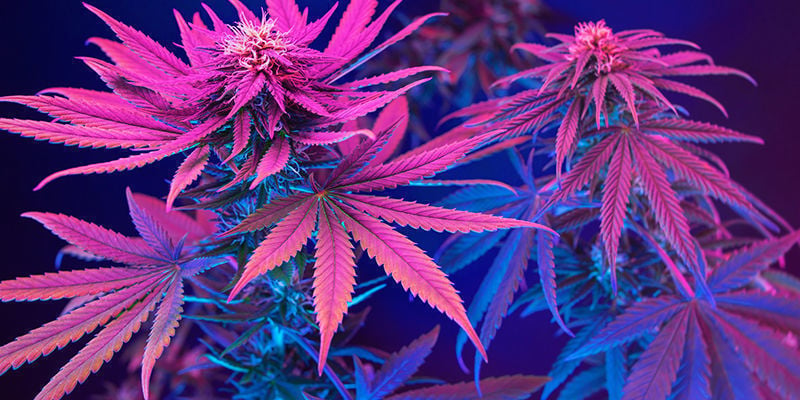
In a nutshell, turning your cannabis purple appears to involve mimicking the onset of autumn, thereby triggering certain responses in your plant.
However, though you'll want to slightly change your plant’s environmental conditions, you don’t want to properly stress it. Don’t get it too cold, and unless you really know what you’re doing, it’s probably best to stay away from tampering with pH levels too much. Keep them where weed likes it—between 6.0 and 7.0 in soil and 5.5. to 6.5 in hydro!
Any practices that cause extreme stress are more likely to cause your plants to become hermies, rather than high-yielding purple beauties.
As with any grow, treat them with love, and just tinker here and there for optimal results, and you’re likely to achieve a big harvest of beautiful purple buds. And remember, if they don’t turn purple this time, there’s always your next grow!
- Khoo HE, Azlan A, Tang ST, & Lim SM. (08/13/2017). Anthocyanidins and anthocyanins: colored pigments as food, pharmaceutical ingredients, and the potential health benefits - PubMed - https://pubmed.ncbi.nlm.nih.gov
-
 3 min
June 15, 2021
Blueberry: Cannabis Strain Review & Information
Renowned for her fruity flavour and chill effects, Blueberry has certainly amassed huge popularity over the years, winning multiple awards. Fans of fruity, sweet berry flavours take notice; there's...
3 min
June 15, 2021
Blueberry: Cannabis Strain Review & Information
Renowned for her fruity flavour and chill effects, Blueberry has certainly amassed huge popularity over the years, winning multiple awards. Fans of fruity, sweet berry flavours take notice; there's...
-
 5 min
April 12, 2021
The Different Colours Of Cannabis And What They All Mean
When you first start smoking or growing weed, you might assume it's always green. However, if you get the chance to see more strains, or perhaps grow some yourself, you'll find cannabis plants can...
5 min
April 12, 2021
The Different Colours Of Cannabis And What They All Mean
When you first start smoking or growing weed, you might assume it's always green. However, if you get the chance to see more strains, or perhaps grow some yourself, you'll find cannabis plants can...











 United States
United States








